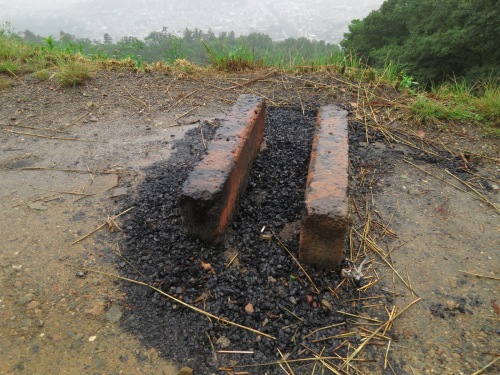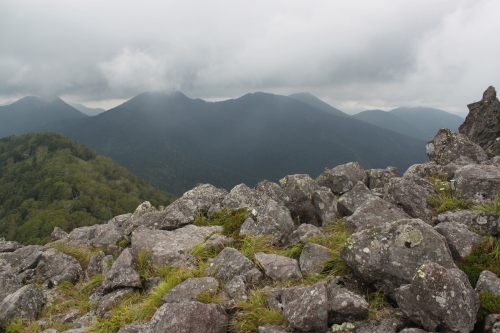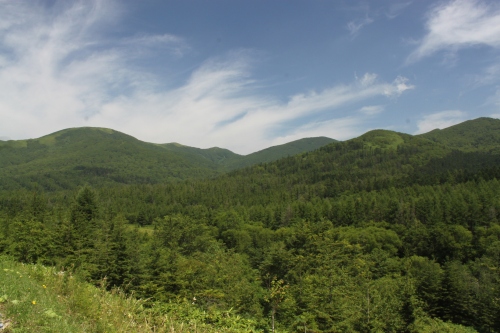As I chip away at the remaining peaks on the Kansai 100 list, the logistics are becoming more and more complicated. My final peak in Hyogo Prefecture lie far to the west, on the border of Okayama Prefecture in an area that is more characteristic of the Chugoku region than the Kansai. What were the folks at Yama to Keikoku thinking when they made this list?
The express train departed Osaka station at preciously 9:15 on a cloudy but cool morning in late August. Full of joy after securing a seat, I drifted off into a peaceful slumber, waking up nearly 45 minutes later to an all but deserted train. Examining the LED-panel displaying the train information left me shellshocked, as somewhere along the way the carriage converted itself into a local train. In my haste to catch the train, I had inadvertently jumped on the express train (kaisoku) rather than the speedier super express (shinkaisoku). Again, the powers that be that made these train names need to be drawn and quartered, as an express train really isn’t express after all. They should have named the trains in a more realistic fashion. Instead of kaisoku, they could simply call it the bochi bochi hayai. My blunder meant that I would miss the 10:25am bus leaving from Himeji station, leaving little choice but to choose another mountain in the area. I thought about getting off at Sone station and reclimbing the sandstone rock formations of the Harima Alps, but something inside urged me on, so I changed to the shinkaisoku at Kakogawa station and arrived shortly before 11am.

I rushed out of the ticket gates and found to my utter relief that another bus was departing for Yamasaki in only a few minutes. Readjusting the schedule scribbled on a piece of scrap paper from the previous night, it appeared that I would be just in time to make the 12:10 connecting bus to Chigusa village. If I missed that connection, there would be no way of making it to Mt. Hinakura, my target peak for the afternoon. The first bus to Yamasaki weaved through a nondescript part of town which offered glimpses of the newly renovated castle that makes Himeji so proud. Perhaps the craftsman took this pride a little too seriously, however, as the ancient structure is now completely white from roof to foundation. Apparently, they argued, this is what the original castle looked like before centuries of grit and car exhaust stained the roof a dark gray. It’s all a bit shocking for the system, as the castle looks more like a wedding cake than a bastion of feudal architectural fortitude.

The rest of Himeji is dotted with shops of peculiar nomenclature. Perhaps the denizens of this sleepy city paid attention in their junior high language classes, offering free entertainment for visitors cruising through the quiet streets. The bus first passes by a bicycle shop named Tomato before whizzing by a hair garden named Affection. Directly across the street from this conservatory of scalpel beauticians sat a hair topic studio named Back-up. Yamasaki city to the north was no different, as along the main street the patisserie Vanilla vies for attention alongside a dog salon aptly named Alf. The names became a bit more eastern as the bus navigated the smaller villages to the north, with restaurants named Tengu and corner stores fashioned after Japanese flowers such as Sumire and Himawari. The bus pulled into Chigusa shortly before 1pm, nearly 4-1/2 hours after locking my front door that morning.
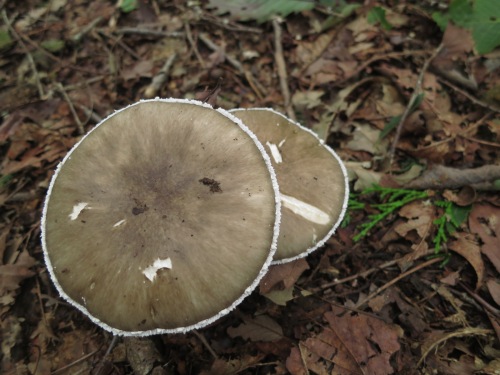
With all that pent-up energy and frustration, I nearly doubled my usual pace on the concrete forest road that led to the start of the hike. According to the maps, this road would lead me most of the way to the mountain pass, where it was a short but relatively gently stroll along the ridge to the high point. The first landmark on the route was Hinakura shrine which was unfortunately closed for renovation. I said a quick prayer in passing before weaving through fields of rice and asparagus and into a large cedar forest guarded by a massive chain link fence. A sign on the barrier warned that it was hunting season, and for visitors to exercise caution when setting foot on the mountain. To the left of this notice sat a Beware of Bears sign indicating that this area was crawling with creatures in varying stages of anorexia.

Thanks to the recent rains, the forest was beaming with greenery on every imaginable surface. Toadstools sprouted out of the soft soil like makeshift refugee camps as the creeks roared with runoff. Further up the constricted valley, a white flatbed pickup truck sat by the side of the road, its occupant scurrying through the woods in search of something to shoot. Perhaps this was one peak where I should stay exactly on course instead of bushwhacking my own shortcuts through the backcountry. The road eventually petered out into a trail, which spent most of the time in the creek waters until even those waters trickled to a halt once the headwaters were breached. Freshwater crabs scurried through the thick undergrowth in search of nourishment while frogs and grasshoppers jumped about, curious by the visitor trespassing through their hidden habitat. I took my first break at the mountain pass, where another white vehicle with yellow license plates sat idle. Despite the cool temperatures, the narrow valley held in the humidity, leaving my torso dripping wet with perspiration.

From here, the path turned north, initially following a forest road on the Okayama side before ducking into a deciduous forest saddling the prefectural border. Drops of rain filtered through the thick canopy before Mother Nature had second thoughts and dumped her heavy load elsewhere. Higher up on the summit plateau, the flora changed again, favoring sultry pine and susuki grass on the undulating hills of a trio of peaks breaching the 1000-meter mark.

Each top is placated by a stone marker with the three summits named ichi no maru, ni no maru, and san no maru . Maru is Japanese for ’round’, and bulbous these peaks were indeed, losing elevation between each successive mound in a comical attempt to imitate a roller coaster. Compacted mud fields made the going downright treacherous, and eventually the high point was reached around 2:30 in the afternoon. Mt. Ushiro, Okayama’s highest peak, stood prominently to the north, a thick veil of cloud concealing its jagged crown. To the west, the mountains of Okayama drifted in and out of cloud while sheets of rain squalls watered the summit of Mt. Seppiko directly behind me. I was above the cloud line for now, taking in the sights accompanied only by an army of ants, flies, and other insects buzzing through the grass covered slopes.

I returned preciously the same way in which I had climbed, the only highlight being actually bumping into one of the hunters on his way down for the day. Empty-handed he was, but he did ask me if I had seen any bear or deer higher up. I didn’t have the heart to explain to him that most animals can’t survive in a monocultural forest of cedar, and that he would have much better luck to the north, where Okayama’s highest mountain was much too steep for the post-war cedar planters. Mt. Ushiro is on my list of Prefectural high points, but it would have to wait until the autumn. Back at the bus stop, I had an hour to kill but fortunately the hot spring and restaurant ensured that all time would not go to waste. Once back at Yamasaki bus terminal, one of the bus drivers explained that a highway bus would shuttle me to Sannomiya station, eliminating the need to venture back through Himeji. We chatted for a bit about the mountains and the recent leech infestation affecting the surrounding peaks. Fortunately they haven’t ventured to Mt. Hinakura as of yet, but it’s only a matter of time before they continue their slow march north.
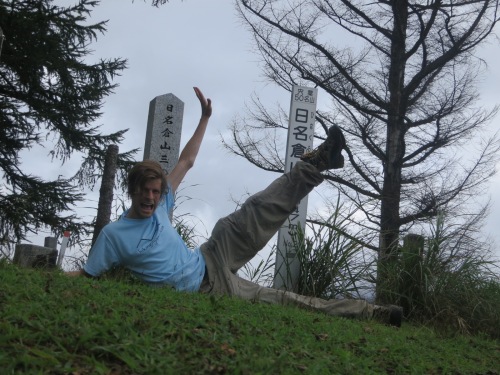
And with that, the final peak in Hyogo Prefecture is now in the history books. Over the last several years, I’d become a big fan of the mountains of the Banshu region, so there were mixed feelings of both relief and regret with the realization that I no longer had an excuse to visit the unspoiled scenery of this hidden area of Kansai. Of course, it only takes the action of one publishing company to change that.



